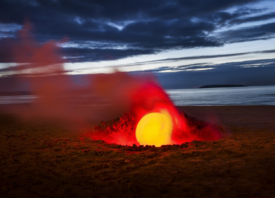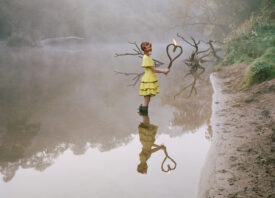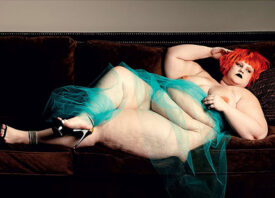Search this site
Where is Photography Banned?

In the last decade, photographers covering stories for The New York Times, Getty Images, National Geographic, and more have been arrested for taking pictures on US soil. Authorities cracking down on journalists isn’t a new phenomenon, but it’s one that’s gained traction in this country in recent years.
“Post-9-11 was the real start of this (in this century, at least), and it has only gotten worse in the age of Trump,” Leslie Burns, Esq., an attorney specializing in photography and other creative industries, tells us. Now more than ever, it’s crucial for photographers to familiarize themselves with the law and to understand where they can–and cannot–take pictures.
We asked Burns about places in the United States where photography is restricted and where it isn’t. Below, we take a closer look at some common areas of confusion. Bear in mind that nothing in this article is legal advice–just a basic primer meant to provide educational information. If you need legal advice, you must contact a lawyer directly.
Military bases
“Generally speaking, anything military or of national security interest is off-limits (think nuclear plants),” Burns tells us. “Also airports these days can pose security-related problems. While technically you can shoot from the street into any of these spaces (think: standing outside of a military base, but photographing into it), I would suggest that will probably get you at least a field interview of some kind.”
Case in point: In 2009, a woman from New York was arrested after taking pictures outside an Air National Guard base and jailed for four days. The charges were ultimately dismissed, and five years later, she won a settlement of more than a million dollars in a civil rights lawsuit. Staying outside these locations and photographing them from the outside doesn’t violate the law, but it can land you in hot water, so weigh your options carefully.
Private property
As a photographer in the United States, you have the right to photograph on public property under the First Amendment–but be careful with how you define “public.” Burns explains, “A big problem is that, overall, we mix up what a public place is. There is ‘public’ in the sense of ‘owned by the government and, so, the people’ and public as in the place is frequented by the general public.
“For example, Rockefeller Center in NYC is private property, although the public goes in and around it all the time. Malls, amusement parks, and sports venues are all private property, so you may have to get permission to shoot in them.
“Usually no one will say anything about snapshots, but they can. However, they cannot insist you turn over your media or delete the photographs; they can only ask you to leave or have you arrested for trespassing if you don’t. If in doubt, ask for permission to shoot anywhere privately owned. If you get a ‘no,’ then think about whether you really do need to make those photographs.”

Religious sites
Depending on the individual location, you might find you’re not permitted to photograph the interior of a sacred or religious site. “Religious sites or the like don’t get any special protections, but they are actually not public places (they are owned by their respective religious entities) and so they can set whatever rules they wish for their property,” Burns elaborates.
“I think it’s very important for photographers and the public generally to remember to respect the faithful in each place. Even, perhaps especially, if you are not one of the ‘usuals’ for any religious place, it’s better to ask permission, graciously, first.”
Architecture and buildings
“My favorite myth is that you can’t shoot a building without violating the architect’s copyright,” Burns tells us. “In the USA, you can shoot a building from a public space (like the sidewalk) without getting any sort of permission from the building’s owner or the architect, and publish those photographs. There is a specific part of copyright law that says it’s okay: 17 U.S.C. §120(a).”
Here’s where it can get tricky: “Now, if there is a big trademarked logo or something on the building (or if the building is trademarked itself—like the Flatiron in NYC or the Rock & Roll Hall of Fame in Cleveland), it’s possible that the trademark owner might get litigious, but unless you are using the photograph to imply some sort of relationship to the company, it’s not likely.”
She cites the well-known Rock & Roll Hall of Fame case from the 1990s: when a photographer named Charles M. Gentile sold posters featuring his pictures of the I. M. Pei building, the museum sued. But as Burns reminds us, the photographer won in that case.

National parks
In some cases, your intended usage could dictate where you can and can’t shoot. “Even public places, like city parks or even national ones, if you are doing a commercial shoot of any kind, you will likely need a permit,” Burns says.
“That is, if you’re a lone photographer shooting a hand-held camera (or maybe a monopod)—not a produced shoot—usually there is no permitting required, but anything more elaborate will require permits from the appropriate authority. Don’t try to guerrilla shoot—the penalties can be very steep.”
Visit the National Park Service to learn more about photography permits.

From the air
If you’re shooting from the air using a drone or similar device, you might be entering a bit of a gray area. In a highly-publicized incident in 2013, for example, National Geographic photographer George Steinmetz was arrested after taking pictures of a Kansas feedlot using a paraglider. The trespassing charges were dismissed, but the situation sparked larger conversations about the legal details surrounding aerial photography.
“In theory and common law, the air above private property is also the domain of the property owner, so flying a drone (or, like Steinmetz, a person) over might be trespass,” Burns explains. “At a certain altitude, that ‘ownership’ drops, which is why you can fly planes and helicopters over most places without a problem.
“Photojournalists, like all journalists, have to make hard choices about just how far they are willing to push the law. Mickey Osterreicher, a lawyer for the National Press Photographers Association, was right this article about this particular situation—authorities look for reasons to arrest if you’re shooting in a potentially sensitive location, like a feedlot. Often, first amendment considerations can save someone who transgresses, but it’s not a for-sure thing.”
The circumstances change when you’re working with areas of national security interest. “Even just shooting (forget about publishing) a military base or other secure site from the air could land a photographer in serious trouble, especially if she’s using a drone for the flight,” Burns adds. “That’s a quick way to get a visit from unhappy authorities. Also, it’s important to note that, to legally operate a drone, you must have it in your visual field at all times.”
Protecting yourself
“The courts are usually getting it right, but it’s awful that photographers have to go through being detained and having cops, etc., confiscate media cards and the like,” Burns says. “Usually the authorities have no right to confiscate media or demand the photographer destroy photographs. There are several organizations fighting this, like the NPPA, the Reporters Committee for Freedom of the Press, and even the ACLU.”
If you have questions about your rights as a photographer, these are all great places to start. You can also browse Burns’s website for details about her practice.



